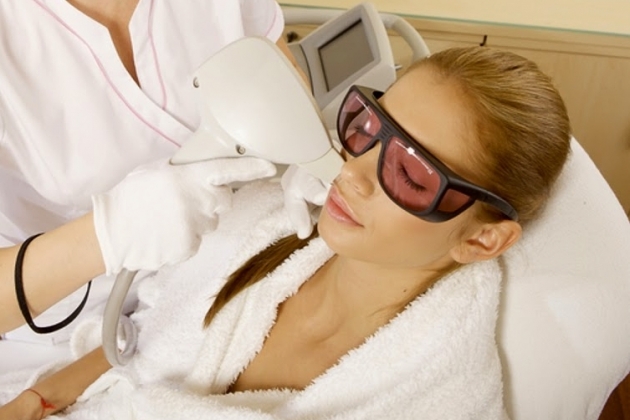Scar or scar tissue on the skin due to burning or other trauma is considered disturbing for some people, both cosmetic and functional. At present, there is a need for effective therapeutic modalities for the management and rehabilitation of patients with scar tissue on their skin. Corticosteroids injected intralesionally remain the main therapy for hypertrophy and restrictive scars. But with increasingly advanced laser technology, new treatment options have emerged that may be more effective in treating scarring.
The scar will be formed after several physiological processes of a wound. , the body will try to close the wound with various processes, namely inflammation, proliferation, and remodeling. The wound will cause platelet degranulation and activation of blood coagulation components to form fibrin threads as an initial stage of wound healing. Degranulated platelets release and activate cytokines and growth factors as chemotactic agents to attract macrophages, neutrophils, fibroblasts, and others. Fibroblasts will synthesize the extracellular matrix as a framework and a bridge to close the wound and for the growth of blood vessels. Myofibroblasts are needed to make wound contractions so that it is easier to close. Then when the wound is closed extracellular matrix will be degraded and type III collagen becomes collagen type I.
Injuries due to temperature and chemicals usually not only hurt physically but also have physiological effects. Therefore treatment of scarring becomes a challenging thing. One of the first known therapeutic strategies is intralesional corticosteroid injection. Corticosteroids can interfere with collagen formation and increase collagen degradation. However, the injection of triamcinolone acetonide is usually very painful, and special abilities are needed to inject it so that no side effects from sequelae such as fat atrophy occur. Several studies on hypertrophic scarring or keloid formation found several therapeutic strategies to avoid or improve scarring and keloid formation, such as intralesional cryotherapy, intralesional 5-fluorouracil, interferon, and bleomycin.
Advances in laser technology and its application have contributed to therapeutic strategies to help improve the function, symptoms, and cosmetics of scar tissue formed. Fractional photothermolysis has been proven to overcome scarring and pigmentation lesions. Whereas ablative fractional laser (AFL) can help topical drugs enter the skin by creating vertical canals so that it induces wound healing and collagen remodeling response. CO2 laser ablative fractional therapy has been shown to help re-epithelialization in full within 48 hours of normal skin. Fractional lasers have been used extensively to improve the surface of the skin with cosmetic indications, therapies for atrophy scarring and surgical scarring.
One of the proofs from the advancement of laser technology also helped create a therapeutic strategy for scarring, namely the successful use of fractional CO2 lasers that are assisted with corticosteroids to treat scarring due to burns. A 22-year-old woman who has contracture scarring between the fingers of the right hand and has limited movement, keloids on the right and left wrists, irregular pigmented elbows, and rough and reddish faces. This woman received fractional CO2 laser therapy and triamcinolone acetonide topical suspension after therapy on her face and hands. This therapy is repeated 5 times every 4-6 weeks for his hands and only once on his face. After one fractional CO2 laser therapy, his face became much better, and his skin surface was smoother, and after five times the fractional CO2 laser therapy. His arm looked better, and his wrists increased. This patient has improved skin surface texture, hypertrophy becomes thinner, and improvement in dyschromia. Therefore overall there was a 50-75% improvement in this woman after CO2 laser therapy for 3 months. After therapy, the patient experiences redness and edema. However, fractional CO2 laser therapy in patients is safe and no side effects have been reported.
Increasing technological advancements, including in the field of laser technology, provide new therapeutic options for patients with disruptive scarring. CO2 fractional laser therapy combined with corticosteroid therapy with a laser has been shown to provide significant, safe, and effective improvements to improve hypertrophic scarring due to thermal injury.
Author: Prof. Dr. dr. Cita Rosita Sigit Prakoeswa, SpKK, FINS-DV, FAADV
Details of the research available at:
https://www.pagepress.org/journals/index.php/dr/article/view/8073
Fractional Laser and Laser Assisted Corticosteroid Delivery for Hypertrophic Scars in Thermal Burns
Ni Putu Susari Widianingsih, Cita Rosita S. Prakoeswa
Dermatology and Venereology Department, Faculty of Medicine, Universitas Airlangga – Dr Soetomo General Hospital, Surabaya, Indonesia.





